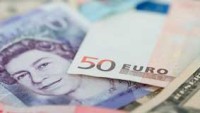 Equity markets got off to a disappointing start this week after Japanese trade data showed a sharp decline in both imports and exports in April. The decline in exports was particularly disappointing raising concerns about weak global demand and the recent appreciation of the yen.
Equity markets got off to a disappointing start this week after Japanese trade data showed a sharp decline in both imports and exports in April. The decline in exports was particularly disappointing raising concerns about weak global demand and the recent appreciation of the yen.
Coming as it did with a slide in oil prices as Iran vowed to keep increasing output, along with a slightly firmer US dollar, and we got a recipe in mild risk aversion, with the Japanese yen gaining ground after US Treasury Secretary Jack Lew insisted that countries should refrain from measures designed to drive their currencies lower, in what was seen as a warning to the Bank of Japan about implementing further measures to weaken the yen.
His insistence that the recent bout of yen strength hadn’t been disorderly, was in contrast to his Japanese counterpart Taro Aso’s insistence that it had been. This difference of views could well hinder the Bank of Japan’s reaction function in the coming days and in the process help push the yen even higher, though if recent commentary by some Federal Reserve officials is any guide any US dollar downside might well be limited.
The recent commentary of the last few days, got ratcheted up yesterday by John Williams the San Francisco Fed chief and James Bullard the St, Louis Fed chief as both talked up the prospects of multiple rate hikes by the end of 2017. The jawboning does appear to be having an effect as the odds of a June rate rise rose to 32% while the odds of a move in July moved up to over 50%.
While the prospect of rate rise in June has increased and US policymakers insist that any move is data dependent the sentiment is hard to chime with what is happening in the manufacturing sector, after the latest Markit manufacturing output number for May posted its first contraction since October 2009.
Back in Europe yesterday we saw a modest recovery in the latest German and French manufacturing and services PMI’s for May, with services in particular standing out, however this hasn’t been enough to entice investors back into European equity markets, which have continued to struggle to gain traction since peaking in mid-April.
Outflows from equity markets this year are estimated to be in the region of $90bn with European bond and equity markets under particular pressure due to negative interest rates and a low growth outlook. This pessimism, along with the lack of any real prospect of a significant pick up has seen an estimated outflow of $22.6bn from ETF’s that track European equity markets since March.
Today’s final German Q1 GDP data is expected to confirm the economy expanded by 0.7% driven largely by domestic consumption. The latest ZEW survey for May is expected to show an improvement in economic sentiment from 11.2 to 12.1.
The UK economy is set to be in focus today, in the wake of yesterday’s hyperbole laden post Brexit outlook for the UK which was delivered by the Treasury and rammed home utterly without nuance by the Prime Minister and the Chancellor of the Exchequer.
The Chancellor went on to warn against the prospect of a DIY recession in the event of a Brexit, sadly his hyperbole could well have the same effect even if we vote to stay in given the trajectory of some of the most recent economic data.
We will also be getting the latest borrowing numbers for April which is expected to show a number of £5.8bn, though this is likely to be overshadowed somewhat by the latest Bank of England inflation report hearings where the Bank of England governor Mark Carney, along with Ben Broadbent and new MPC member Gertjan Vlieghe will be taking questions from MP’s about the how the bank views its outlook for the UK economy.
MP’s are likely to want to question Mr Vlieghe about his recent remarks that he could envisage a scenario where we might see further rate reductions if the economy continued to slow.
EURUSD – currently struggling to overcome the 1.1250 area which means we remain at risk of a move down towards trend line support at 1.1110 from the December lows, and even the 1.1030 area. We need to see a move back through 1.1250 to stabilise, and point the way to a return to the 1.1400 area.
GBPUSD – after peaking at 1.4660 last week the pound has slipped back, however as long as we stay above the recent lows at 1.4330 the uptrend looks set to remain intact. The potential remains for a move towards 1.5000 in the medium term but we need to push through the main resistance near this month’s high just above 1.4700.
EURGBP – Friday’s rebound has the potential to push up through the 0.7785 level and 100 day MA, which in turn could trigger a move towards the 0.7850 area. While below the 0.7770 area the odds favour a continued move towards the 0.7500 area, on a sustained break below the 0.7680 area.
USDJPY – after failing to push on through the 110.50 level the US dollar has slid back keeping the prospect for a return to the 106.00 level on the cards. A slide below 108.70 opens up the downside once more, while we would need a break above 110.50 to suggest a move back to 113.00.
ForexNews.PRO – we speak professionally about Forex market













